Struggling to shed pounds? You’re not alone!
But forget the fad diets and endless cardio. Strength training is your secret weapon.
This article shows how building muscle burns more calories, even at rest.
Plus, strength training offers a ton of benefits beyond looks, like stronger bones and more energy.
We’ll give you a simple plan to get started, including workouts and tips to fit it into your life.
Ditch the yo-yo dieting and build a healthier, stronger YOU!
Benefits of Strength Training for Weight Loss:
Imagine this: You’re tired of feeling sluggish, fed up with those stubborn extra pounds that just won’t budge.
You’ve tried countless diets and cardio workouts, but nothing seems to work.
Frustration sets in, and you begin to doubt if you’ll ever reach your weight loss goals. But fear not, because there’s a game-changer in town: strength training.
1. become a Fat-Burning Machine (Science Says So.)

Let’s talk science for a moment. Did you know that every pound of muscle you gain can torch up to 50 extra calories per day, even while you’re chilling on the couch binge-watching your favorite show? [*]
That’s right.
Resistance training helps you build lean muscle mass, which revs up your metabolism, turning your body into a fat-burning furnace 24/7.
So, grab those dumbbells and start pumping iron to fire up your metabolism and melt away those pesky pounds.
2. The Afterburn Effect: Your Body Keeps Burning, Even After You Stop

Think your calorie burn stops when you finish your workout?
Think again. Strength training creates what’s known as the afterburn effect.
This means your body continues to use up oxygen even after you’ve put down the weights.
This translates to additional calorie burning for repair and recovery, giving your weight loss efforts a nice little boost.
Research from the National Institutes of Health highlights that exercises targeting large muscle groups, like squats, deadlifts, and lunges, are most effective at triggering this afterburn effect. [*]
3. Long-Term Fat Loss

Strength training isn’t just a quick fix; it sets you up for long-term success.
The muscle you build acts like a metabolic furnace, continuously burning calories even at rest.
A study published in the Journal of Applied Physiology demonstrated that people who lost weight through a combination of diet and resistance training were more likely to keep it off compared to those who focused solely on calorie restriction. [*]
This is because muscle helps maintain a healthy metabolism, preventing that dreaded weight-loss plateau.
4. Forget “Skinny Fat” – Build a Lean, Sculpted Physique

Don’t settle for “skinny fat“. Strength training sculpts your body, not just the numbers on the scale.
Building muscle and burning fat changes your body composition, revealing a toned, defined physique even if the weight loss isn’t dramatic.
This shift can be incredibly empowering. Resistance training isn’t just about shrinking; it’s about celebrating your body’s potential and the amazing things it can achieve.
You’ll see and feel the difference as you sculpt a stronger, more confident you.
5. Improved Overall Health:
Strength training goes beyond aesthetics. It’s a full-body investment in your health and well-being.
Building stronger bones, improving posture, and reducing your risk of chronic diseases like heart disease and type 2 diabetes are just some of the benefits [*].
It’s not just about looking good; it’s about feeling good too.
Lace up your sneakers and invest in your long-term health with the numerous benefits resistance training offers, from a stronger body to a reduced risk of chronic diseases.
6. Beyond the Scale: Building Confidence and Inner Strength
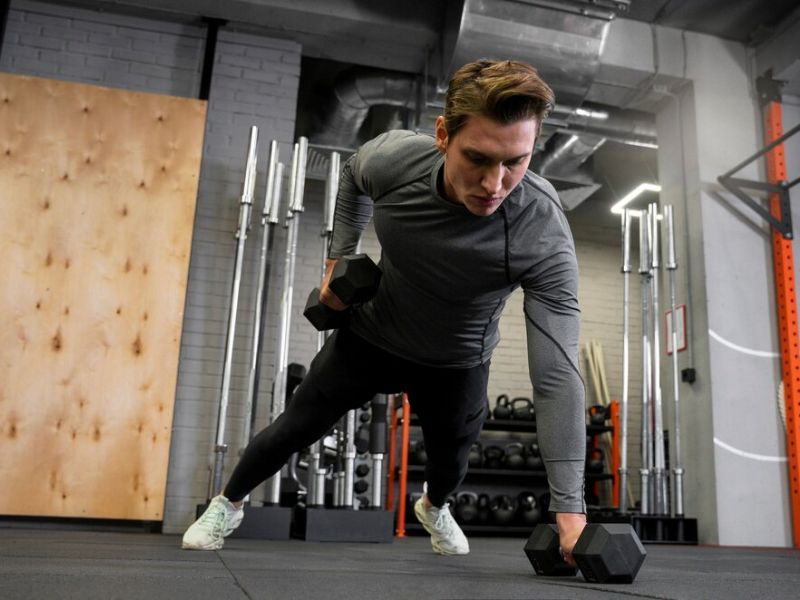
Have you ever struggled to carry groceries or felt intimidated trying a new physical activity?
Strength training can be a game-changer for your confidence.
As you get stronger, you’ll not only see physical changes, but you’ll also feel a newfound sense of empowerment in your own body’s capabilities.
Imagine the satisfaction of mastering a new exercise or feeling the strength to conquer everyday tasks with ease.
7. Body Image Revolution: Celebrate Strength, Not Just Size

Ditch the shrinking mindset. Strength training isn’t about fitting into a mold; it’s about celebrating your body’s unique potential.
As you build muscle and sculpt your physique, your body composition changes, leading to a toned and defined you.
This shift goes beyond the scale, fostering a positive body image based on what your body can achieve, not just the number it displays.
Resistance training is all about celebrating your body’s strength and health, building a strong and confident relationship with your physique.
8. Stress Less, Feel Better: Strength Training as Your Mental Ally

We all know the feeling of stress weighing us down. But did you know strength training can be a powerful stress reliever?
Lifting weights has been shown to elevate mood-boosting chemicals in the brain, like endorphins and serotonin. [*]
These chemicals combat stress hormones, leaving you feeling calmer and more positive.
Additionally, the focused concentration required during resistance training can act as a form of meditation, promoting relaxation and reducing anxiety.
Studies published in the Journal of Strength and Conditioning Research have shown that regular strength training can significantly reduce stress levels and improve overall mental well-being. [*]
9. Energy Levels Soaring: Strength Training for a More Vibrant You

Ever feel sluggish throughout the day? Strength training can be your secret weapon for increased energy levels.
Building muscle helps your body use oxygen more efficiently, leaving you feeling more energized for your workouts and daily activities [*].
10. Strong Bones, Strong Joints: Strength Training for a Mobile Future
Strength training isn’t just about sculpted muscles; it’s about building a strong foundation for your entire body.
As you perform resistance exercises, you strengthen the bones and muscles around your joints.
This improved stability and strength can reduce your risk of injuries and help maintain long-term mobility.
Studies published in the Journal of Bone and Mineral Research have shown that resistance training can significantly improve bone density and reduce the risk of osteoporosis, especially as we age. [*]
Getting Started with Strength Training:

Convinced that strength training is your missing weight-loss puzzle piece?
Now it’s time to take action.
Here’s your roadmap to a successful resistance training journey:
Warm-up & Cool-down: Prime Your Body for Success

Think of your warm-up as prepping your car for a road trip. It gets your engine (muscles) running smoothly and prevents injuries.
Aim for 5-10 minutes of light cardio, like jogging or jumping jacks, followed by dynamic stretches.
These stretches involve movement, like arm circles or leg swings, to prepare your muscles for the workout ahead.
After your workout, a cool-down helps your body gradually return to its resting state. Include static stretches for major muscle groups held for 15-30 seconds each.
This helps improve flexibility and prevent post-workout soreness.
Sample Beginner-Friendly Gym Workout (Push-Pull-Legs Split):
Here’s a sample beginner-friendly gym workout split into a Push-Pull-Legs routine. This means you’ll focus on different muscle groups each day, allowing for proper recovery.
Day 1: Push (Focuses on chest, shoulders, triceps)
Dumbbell Bench Press
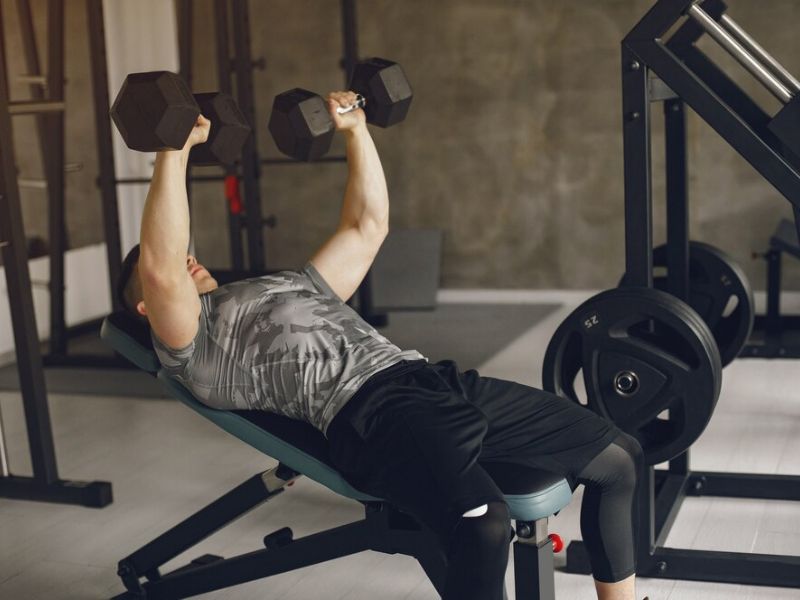
- Dumbbell Bench Press (3 sets of 8-12 reps): Lie on a flat bench with dumbbells in each hand, palms facing forward. Press the weights straight up, then lower them back down with control.
Dumbbell Shoulder Press

- Dumbbell Shoulder Press (3 sets of 8-12 reps): Sit on a bench and hold dumbbells at shoulder height. Press the weights straight overhead, then lower them back down with control.
Tricep Pushdowns (Cable Machine)

- Tricep Pushdowns (3 sets of 10-15 reps): Sit on a cable machine and attach a tricep pushdown handle. Push the handle down, extending your elbows completely, then return to the starting position.
Day 2: Rest
Day 3: Pull (Focuses on back and biceps)
Seated Cable Rows

- Seated Cable Rows (3 sets of 8-12 reps): Sit on a cable machine and attach a rowing handle. Pull the handle towards your chest, squeezing your back muscles, then return to the starting position.
Lat Pulldown Machine

- Lat Pulldown (3 sets of 10-15 reps): Sit on a lat pulldown machine and grasp the bar with a wide overhand grip. Pull the bar down to your chest, then return to the starting position.
Bicep Curls

- Bicep Curls (3 sets of 10-15 reps): Stand with dumbbells in each hand, palms facing forward. Curl the weights up towards your shoulders, then lower them back down with control.
Day 4: Rest
Day 5: Legs (Focuses on quads, hamstrings, calves)
Leg Press Machine
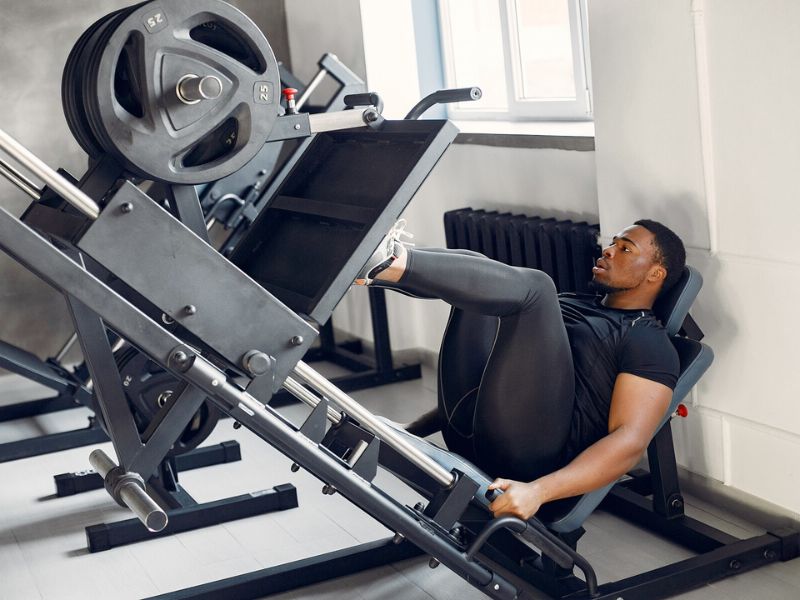
- Leg Press (3 sets of 8-12 reps): Sit on a leg press machine and place your feet shoulder-width apart on the platform. Push the platform away with your legs, then lower it back down with control.
Lying Hamstring Curls Machine

- Hamstring Curls (3 sets of 10-15 reps): Lie on a lying hamstring curl machine and place your calves under the pad. Curl your heels towards your glutes, then return to the starting position.
Calf Raises Machine
- Calf Raises (3 sets of 15-20 reps): Stand on a calf raise machine or a step and raise your heels up as high as you can. Hold for a second, then lower your heels back down with control.
3. Progressive Overload: Keep Challenging Your Muscles
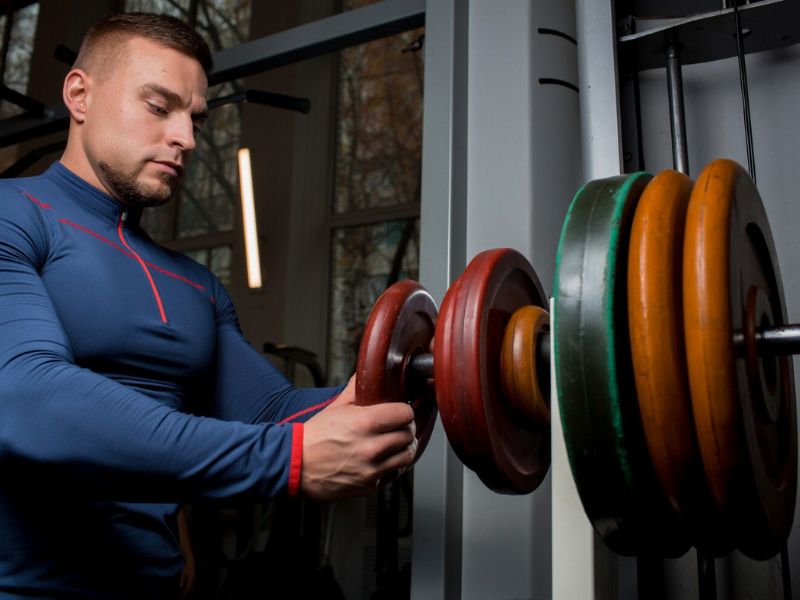
Progressive overload is a fancy way of saying “gradually make things harder.” As your body adapts to the exercises, you need to increase the challenge to keep seeing results. This can be done by:
- Increasing the weight: Once you can comfortably perform 3 sets of 8-12 repetitions with good form, it’s time to add a bit more weight to the dumbbells or machines.
- Increasing the reps/sets: If adding weight feels too soon, try increasing the number of repetitions (reps) or sets you perform.
- Decreasing rest time: As you get stronger, you can shorten your rest periods between sets to keep your workout challenging.
Workout Frequency and Duration:
Start slow and build consistency. Aim for 2-3 strength training sessions per week for 20-30 minutes each.
As you get stronger and more comfortable, you can gradually increase the frequency or duration of your workouts.
Remember, consistency is key. Sticking to a regular routine will be more effective than sporadic, intense sessions.
Combining Strength Training with Cardio:
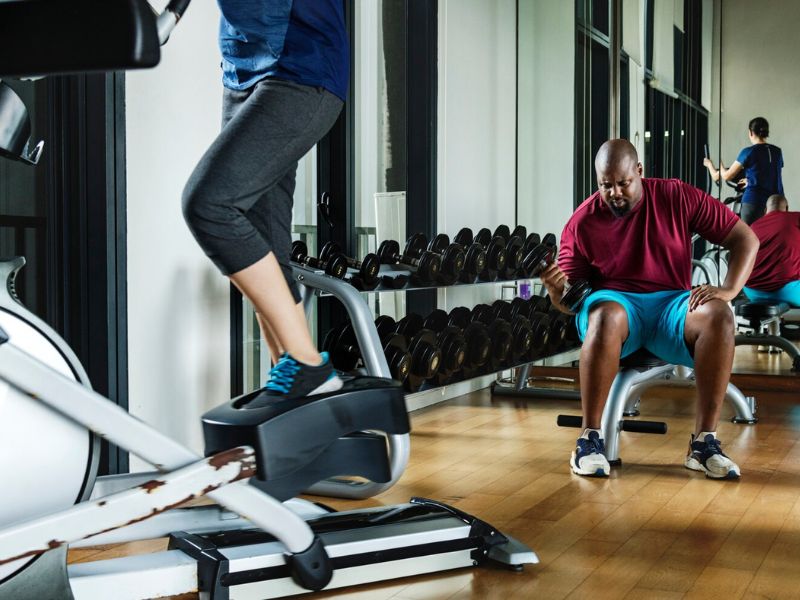
So you’re rocking your new strength training routine, feeling stronger and more confident.
But a nagging question might linger: “Should I add cardio to my weight loss plan?” The answer is a resounding yes.
Strength training is a powerful tool, but for optimal weight loss and overall health, it goes hand-in-hand with its perfect partner: cardio.
Think of it like this: resistance training is like building a powerful, calorie-burning engine (muscle), while cardio is like stoking the fire to keep that engine running efficiently.
Here’s why both are crucial for your weight loss journey:
1. The Power of Balance:
Imagine your fitness routine as a balancing act. On one side, you’ve got cardio, the calorie-burning superstar that gets your heart pumping and sweat dripping.
On the other side, you’ve got resistance training, the muscle-building maestro that transforms your body from the inside out.
Together, they form a powerhouse duo that’s unstoppable in the quest for weight loss and overall health.
2. Cardio vs. Strength Training:
Let’s break it down. Cardio is like a sprint—it burns calories quickly and efficiently during your workout.
But here’s the kicker: once you hop off that treadmill or bike, the calorie burn screeches to a halt. That’s where strength training swoops in to save the day.
Unlike cardio, resistance training revs up your metabolism by building lean muscle mass, turning your body into a calorie-burning furnace even at rest.
3. Finding the Perfect Blend:
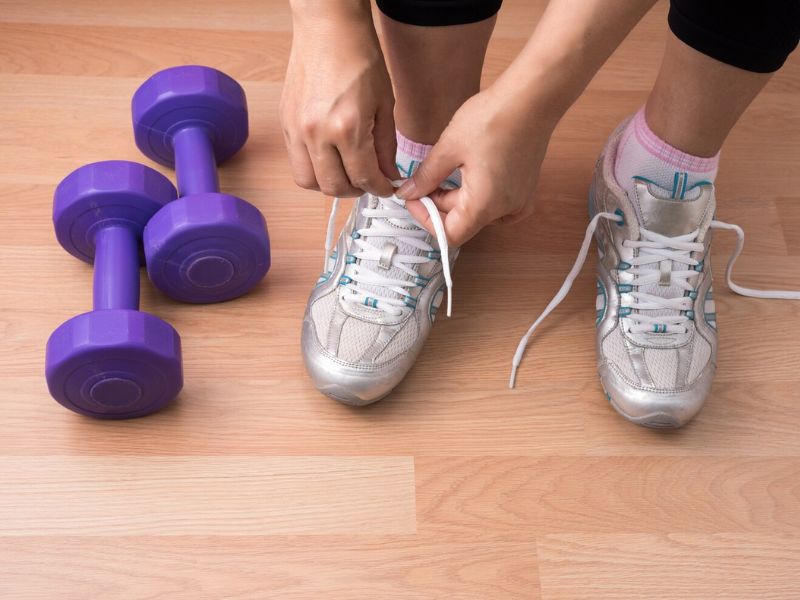
So, how do you strike the right balance between cardio and strength training?
It’s all about finding what works for you.
Aim for a mix of both aerobic activities (think running, cycling, or dancing) and Bodyweight exercises (hello, squats and push-ups) throughout the week.
The American College of Sports Medicine recommends at least 150 minutes of moderate-intensity cardio per week, paired with two or more days of resistance training for optimal results [*].
Addressing Common Concerns and Modifications

Let’s face it, we don’t all start with a clean bill of health. Maybe you have a bad knee from a past injury, or perhaps you’re just getting back into exercise after a long break.
The good news is, strength training can still be incredibly beneficial, even with limitations. Here’s what you can do:
- Listen to your body: Certain exercises might aggravate old injuries. Focus on exercises that don’t cause pain, and consult a doctor or physical therapist for a personalized plan that caters to your limitations.
- Focus on low-impact exercises: Exercises like bodyweight squats, lunges, planks, and push-ups are fantastic options for beginners and can be modified further to reduce impact.
- Start light and gradually progress: Don’t push yourself too hard, especially when starting. Use lighter weights or bodyweight exercises.
- Muscle Soreness: The Ache of Progress (and How to Deal With It): Feeling a little sore after your workout? That’s your muscles getting stronger. It’s normal and temporary. Here’s how to fight the soreness:
- Chill time: Give your muscles a break with rest days and plenty of sleep (aim for 7-8 hours).
- Stretch it out: Gentle stretches after workouts and on rest days help ease the tension.
- Hydrate like a champ: Drink plenty of water throughout the day to keep your muscles happy.
- Listen to your body: Don’t push through extreme pain. Take breaks and modify exercises if needed.
- Time Commitment: Big Results Don’t Require Huge Chunks of Time: You don’t need hours at the gym to see results. Aim for 2-3 short (20-30 minute) resistance training sessions each week. Consistency is key, so stick with it.
Diet and Nutrition for Weight Loss with Strength Training
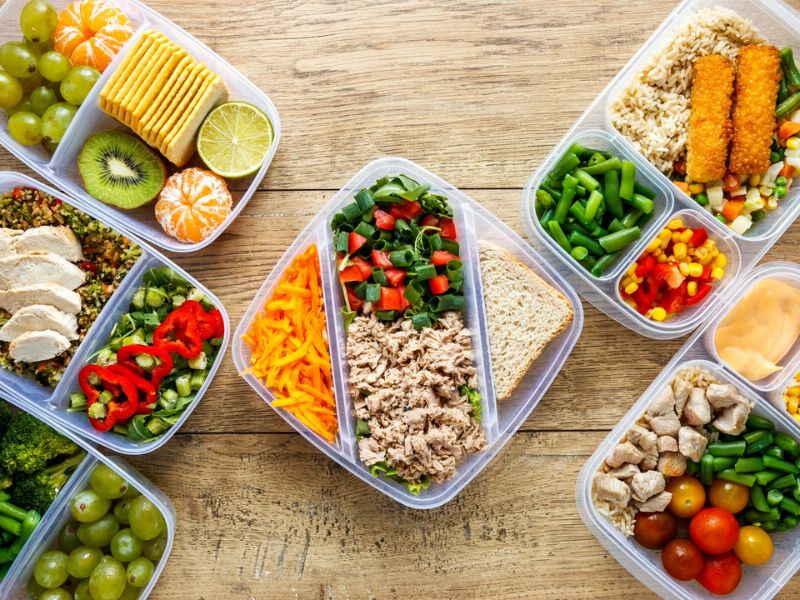
You’ve laced up your sneakers and embraced the world of strength training.
Awesome. But remember, weight loss is a two-pronged attack: exercise and diet.
What you eat plays a crucial role in optimizing your results and keeping you energized throughout your fitness journey.
Here’s how to fuel your resistance training with an dietary twist:
Protein: The Building Block of Muscle

Think of protein as the building blocks for your muscles. Strength training creates tiny tears in your muscle fibers, and protein helps repair and rebuild them, making them stronger.
Studies published in the Journal of the International Society of Sports Nutrition show that consuming adequate protein can support muscle growth and recovery, which is essential for weight loss and building a lean physique. [*]
So, how much protein do you need? Aim for 0.8-1 gram of protein per pound of bodyweight each day. Here are some protein-rich Indian food options to add to your plate:
- Dal (Lentils): A staple in Indian cuisine, dal is packed with protein and fiber. Explore different varieties like moong dal, masoor dal, or chana dal for a protein punch.
- Chicken/Fish: Lean protein sources like grilled chicken breast or baked fish are excellent choices.
- Paneer: This Indian cottage cheese is a great source of protein and calcium, making it a perfect post-workout option.
- Eggs: A complete protein source, eggs are affordable, versatile, and delicious.
Healthy Eating Habits: Your Key to Success

Beyond protein, consider these healthy eating principles for weight loss:
- Portion Control: Our eyes are often bigger than our stomachs. Use smaller plates and bowls to avoid overeating.
- Mindful Eating: Pay attention to your hunger and fullness cues. Eat slowly and savor your food to avoid mindless munching.
- Limit Processed Foods: Processed foods are often high in unhealthy fats, sugar, and sodium. Opt for whole, unprocessed foods like fruits, vegetables, and whole grains.
- Stay Hydrated: Water is essential for overall health and can also help you feel fuller for longer. Aim to drink plenty of water throughout the day.
Sample Meal Plan for Strength Training Beginners:
Breakfast:
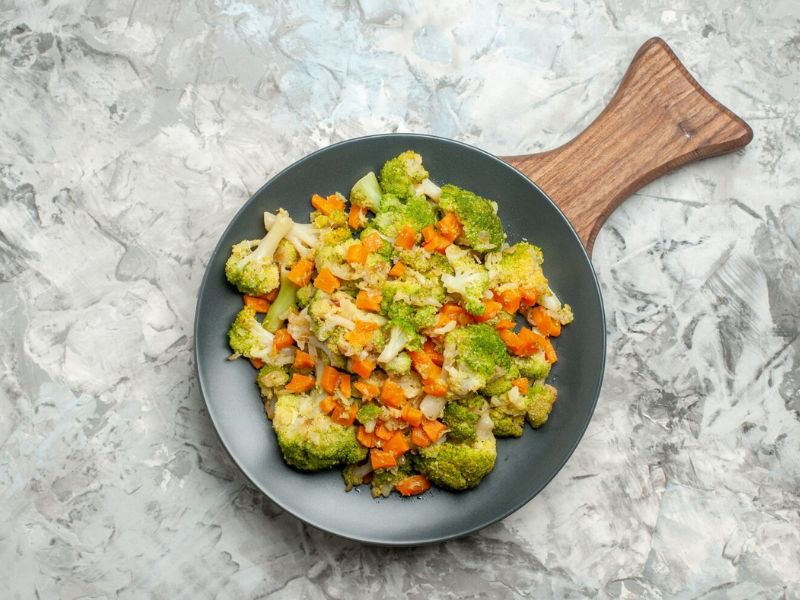
- Whole wheat roti or paratha with a side of dal or paneer bhurji
- Scrambled eggs with chopped vegetables and a slice of whole-wheat toast
- Greek yogurt with berries and a sprinkle of nuts
Lunch:
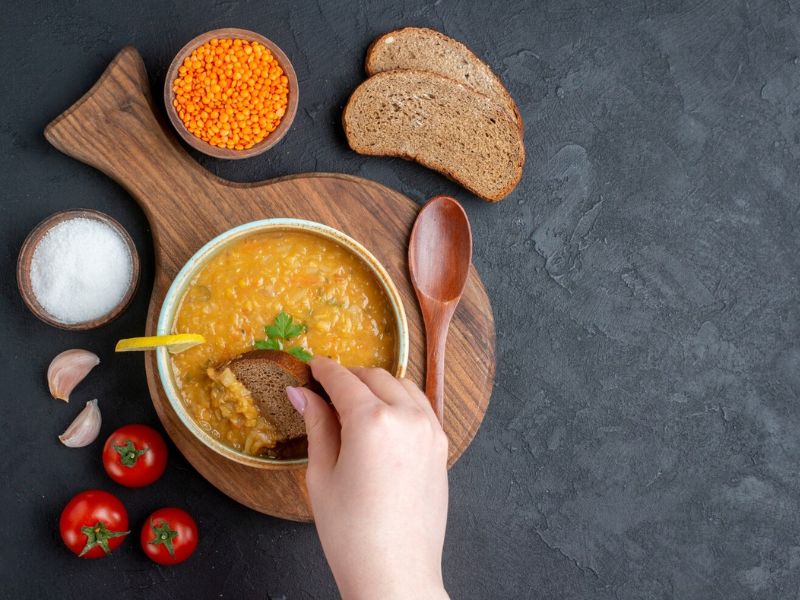
- Grilled chicken breast with a side of brown rice and roasted vegetables
- Fish curry with steamed vegetables and brown rice
- Lentil soup with a whole-wheat bread roll
Dinner:

- Chicken stir-fry with vegetables and brown rice
- Vegetable biryani made with brown rice and lean protein like tofu or lentils
- Baked fish with roasted cauliflower and quinoa
Conclusion:
This article completely revamps the idea of weight loss, emphasizing strength training as the missing puzzle piece.
Forget endless cardio and fad diets. Strength training builds muscle, which acts like a furnace, burning calories even at rest.
This afterburn effect keeps your metabolism firing long after you leave the gym.
Beyond aesthetics, resistance training offers a treasure trove of benefits. It improves bone density, reduces the risk of chronic diseases, and boosts your confidence. It can even be your secret weapon against stress and low energy levels.
Ready to ditch the yo-yo dieting and build sustainable results? This article provides a roadmap to get you started.
It includes a sample beginner-friendly workout routine, addressing common concerns like injuries and time constraints.
It also offers tips on maintaining motivation and fueling your workouts with a protein-rich Indian diet.
So, lace up your sneakers, grab some weights (or improvise with household items.), and embark on a journey towards a stronger, healthier, and more confident you.


13 thoughts on “Lose Weight & Get Fit: 10 Strength Training Benefits ”